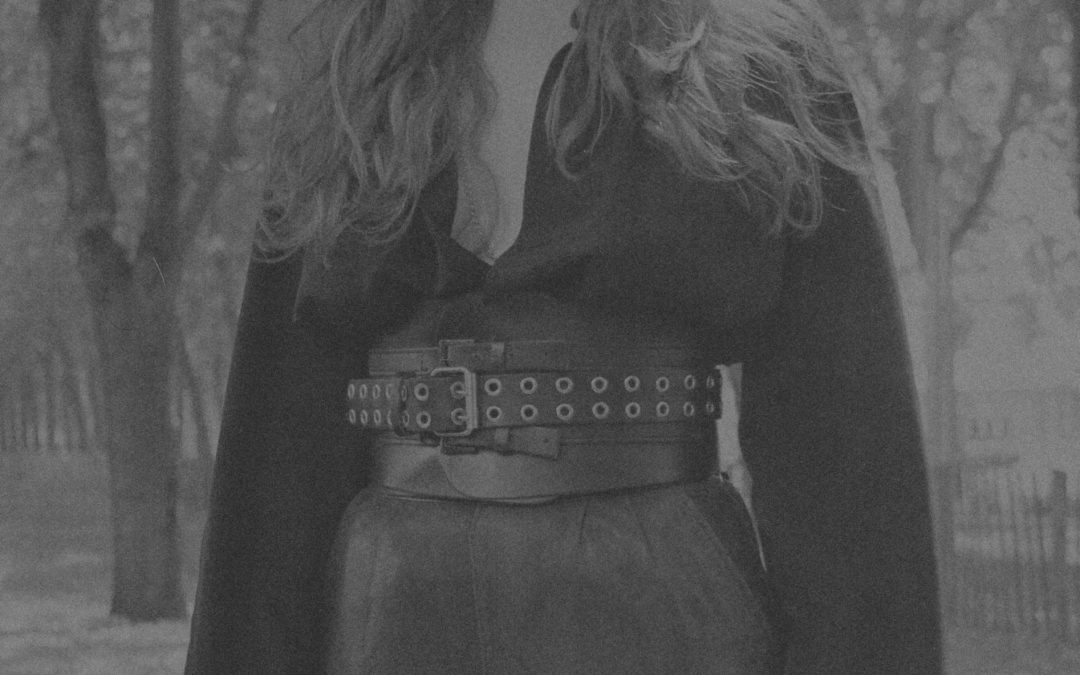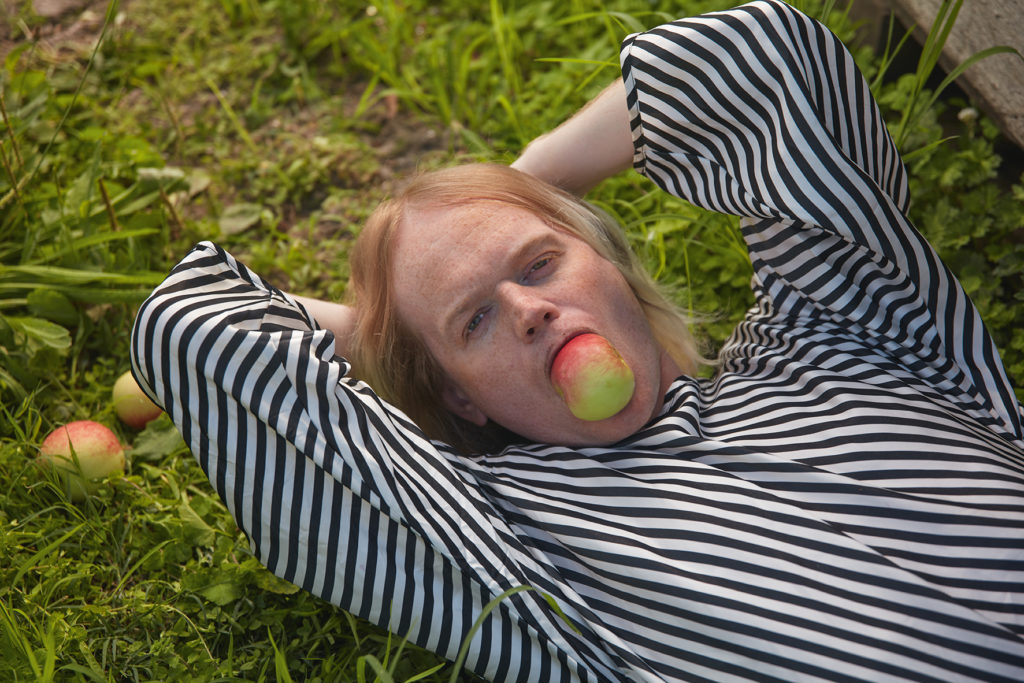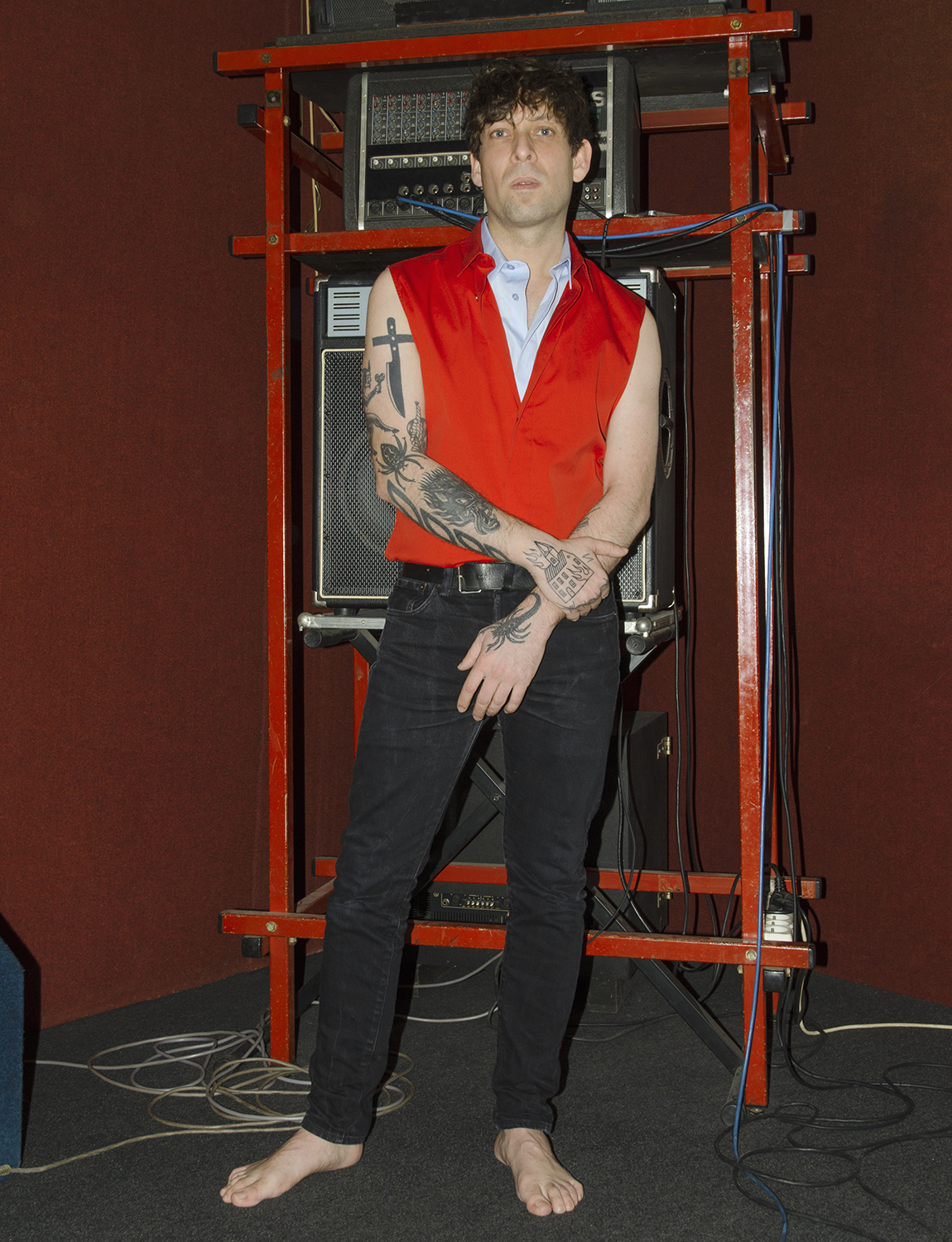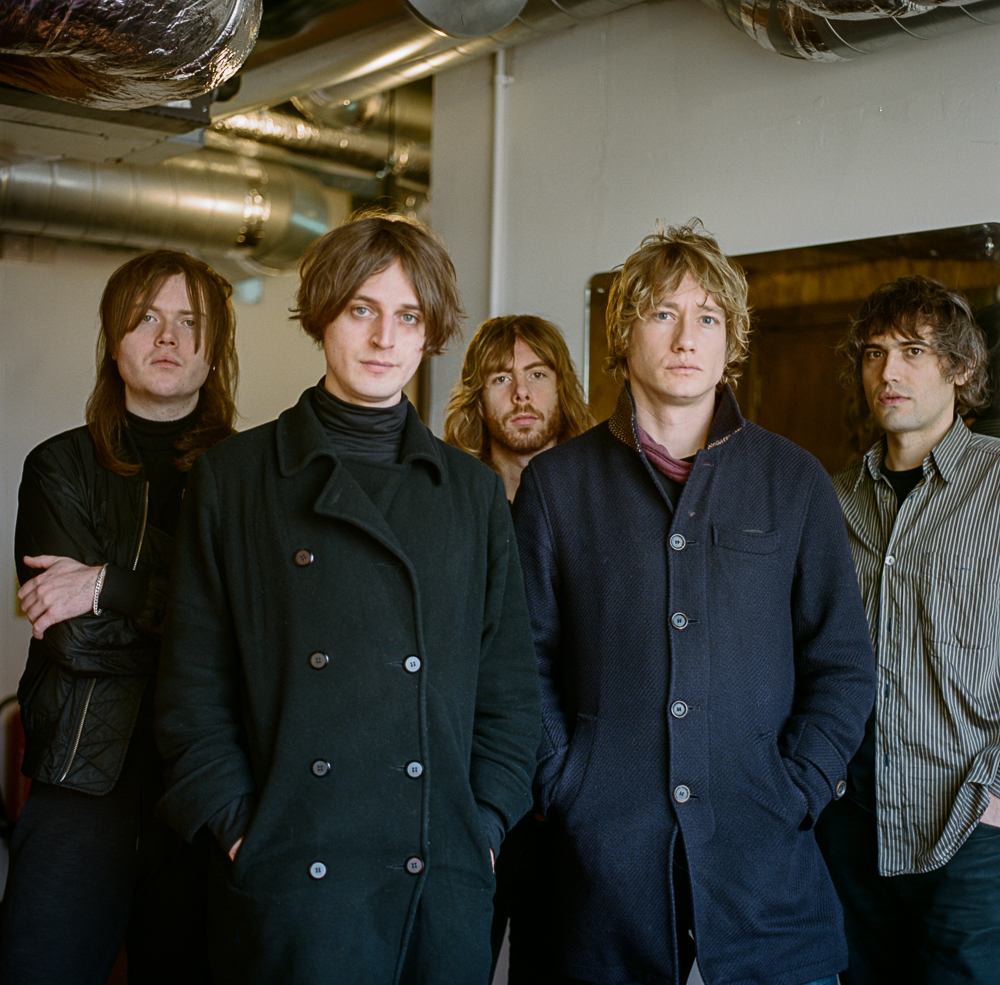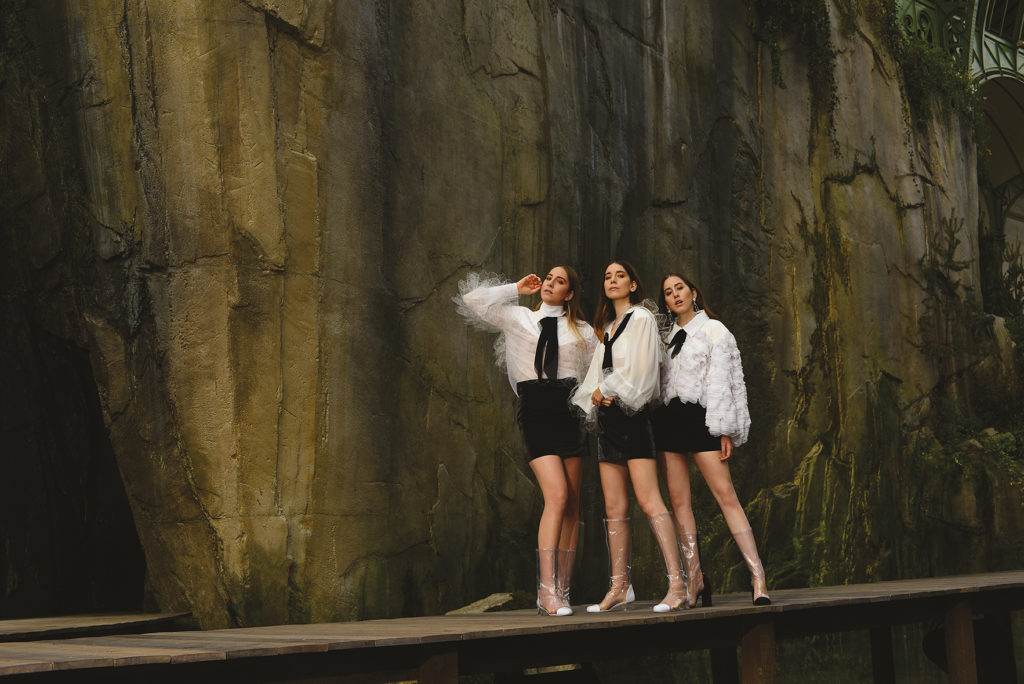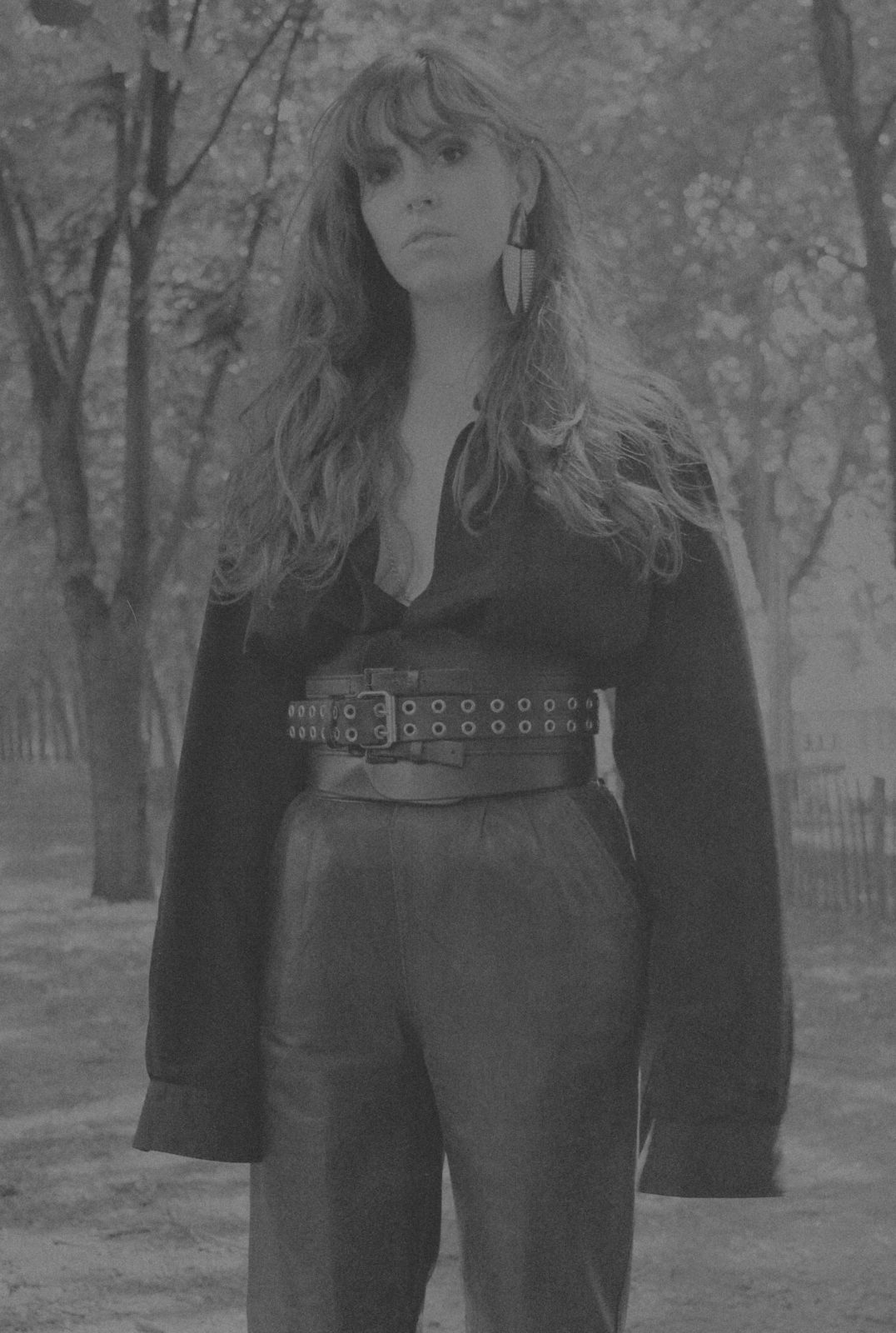
Dior Homme - shirt, pants, stylist's own - corset, Noir Kennedy - vintage belt, Saint Laurent by Anthony Vaccarello earring, Emma's own necklace
A MEETING WITH EMMA RUTH RUNDLE
By Alice Butterlin
After stints with bands like Red Sparowes, Marriages and The Nocturnes, Los Angeles-native Emma Ruth Rundle launched her solo career in 2011 with an entirely instrumental first album, Electric Guitar One. Three years later, she put even more of herself on the line by using her voice to translate all the turmoil of her soul on the album Some Heavy Ocean. With her visceral and stripped-down sound, the music of Emma Ruth Rundle alternates between somber folk ballads, post rock and blues. She returns this year with On Dark Horses, a brighter and more hopeful album that sees her exorcise her demons one electrifying guitar riff at a time. She met up with us while opening for Chelsea Wolfe in Paris.
Crash: You’ve been touring in Europe lately. How has it been going?
Emma Ruth Rundle: It’s been going really well. It’s a very small solo tour, I’m not playing with a band. We planned this tour mostly because I was invited to play the Montreux Jazz festival, which was the main focus. We built some dates around and Chelsea Wolfe had a few support slots open.
Why did you decide to tour without a backing band this time?
If it’s not a big tour, I can’t really afford to fly the whole band over from the States. Also, playing solo with my guitar is much more personal. It’s more emotional, too. Sometimes some of the subtlety of the songs’ emotions can be covered up by all the instrumentation going on. Little nuances in my vocal performance get lost. Those things become accentuated when it’s just the guitar and the voice. There’s something about it that I enjoy and there’s also more room for improvisation. I can reinterpret certain songs because I don’t have to be matching up with the drummer or the bass player. What’s hard is that sometimes the show can get away from me and there are moments of fear where I realize that I have nothing to hide behind. If you stop playing, there is just no sound, nothing’s happening. (laughs)
What have you been up to since releasing Marked for Death?
We left Europe in December of last year and went back to the States, where I wrote and recorded the last album called On Dark Horses. I got home from this very long tour that lasted three months straight. I was so depressed and I’d been drinking so much on tour. I didn’t want to see anybody. I was really torn between making an acoustic record or a full band record. We all had this energy from playing together that I thought it would be missing an opportunity to make the album without them. There’s also been some one-off festivals and I’ve been painting. I’m working on an art show that will take place in September in Chicago. I also got married! So I’ve been pretty busy. Now we’re getting ready to do a whole other tour for the new record.
With On Dark Horses, was there a specific theme running through the album?
It’s not a concept record. The horse theme developed because of the song “Dark Horse”, which was the center piece of the album. It’s the anchor-song for me. It has the most emotional importance and personal story. All these other themes kept coming from living in Kentucky. The idea of the dark horse – which is somebody who isn’t expected to succeed or win and who is then able to come out of nowhere and do well – was about surviving the last record and overcoming that whole experience. I’ve come out on the other side of it and have made an atmospheric colorful album.
Are the themes of addiction that you tackled on the last album still present in your life?
Addiction is a struggle. The song “Races” is about alcoholism; it draws a comparison between a vampiristic person and alcoholism. Just dragging around in the night, living from bar to bar off of other people’s energy, not being able to stop yourself. That theme is definitely still present. The song “Control” is also about the cycle of abuse and addiction in families. I think the gravity of this album is as intense and dramatic as Marked for Death.
The cover of the album is a photo you took of yourself with a toy horse hiding your face. What message did you want to convey?
I took a lot of photos before working on the album cover and I also worked hard on the concept of collage. The horse I am holding was in the recording studio sitting on top of the tape machine and all his legs were broken off. It made so much sense with the lyrics of the song “Dark Horse”. I thought it was a very strange omen. The producer gave me the horse and it ended up on the cover. It was one of the many photos that I took of that time. I’ve got a huge stack of Polaroids.
On this album and the one before, the cover photos are very raw self-portraits of yourself. As a woman putting out music, you are sometimes expected to “look good” before considering your actual musical skills. Is it important for you to appear your most natural, without any pressure to look attractive or glamorous?
I hate that so much. This issue really strikes a chord with me. As an artist, I don’t want to portray anything other than the music and the songs. There is so much pressure to be all these other things that don’t have anything to do with what my craft is. I struggle a lot with the idea of femininity and the pressure to present a certain way. It is marketing and strategies…someone’s going to look at a photo of you as a woman and decide whether or not to listen to your music and that’s bullshit. I don’t care to waste my energy trying to attract those kinds of fans. That’s also the record label’s job. They don’t have any creative control over what I do, although we did have a hard time with the last album. They did not want that cover photo, they really didn’t like it.
Why?
There are some parts of it that they thought might be misconstrued or disturbing. The nakedness of it, the pose, my unshaved legs… all of that was part of the problem. That’s who I am and that makes sense to put that on the cover. You’re touching on an issue that does matter to me and that is translating through the way I’m making the covers.
It seems that the environment where you write and record has an impact on the final product. Can you take me through the context of each of your albums?
The first solo record I did was Electric Guitar One which is purely instrumental and probably my favorite one. If I had to be remembered for something, I hope it would be for that album. I wrote and recorded that album in a van while I was on tour with Red Sparowes. I somehow ended up in a big back area in the car all to myself. I had a little traveler guitar that I plugged into a computer and was improvising these pieces while watching the landscape. That was a unique writing and recording experience, capturing the impact of the landscape in real time. Some Heavy Ocean was written and recorded at Cathy Pellow’s house. That experience was just a mess, nothing noteworthy there. For the Marked for Death record, I had gone out living in a desert house with nothing in it. There was an Airstream trailer where I would smoke cigarettes and drink by myself. I didn’t leave the property for twenty-two days and I think the isolation of that time has given a bleakness to the record. Recently, I’ve been trying to work on this acoustic record, and I wanted to go to Cornwall by myself after the Meltdown festival. Extreme isolation and being focused on your instrument all day everyday permits you to produce different work. That’s how I wrote “Real Big Sky”: after days of being out there with nothing. Now, I got soft and lazy and I just wanted to come home. (laughs) I live in Kentucky now with Evan Patterson from Jaye Jayle. I met the band last year, got in their tour van and never got out again. I don’t know how the landscape of Kentucky would have affected this new record. I think Kevin Ratterman had a big impact on the sound of this album. He is a central figure in music in Louisville. He’s produced My Morning Jacket records, as well as some Young Widows records, which is actually why I chose him. He understands the guitar tone that we were searching for on this record.
You recorded with Evan Patterson. Was it the first time you collaborated on a solo album?
Yes. Evan Patterson did play second guitar on the record. It’s the first time I haven’t played all the guitar. I’m sure people will start giving him all the credit because he’s a man and that’s the way the world works. (laughs) It was actually really nice to have him there contributing some parts. There’s a new personality somewhere in there.
You also have a duet with Evan Patterson. Were you inspired by iconic duos like Lee Hazlewood and Nancy Sinatra?
People have been saying that kind of stuff to us, comparing us to Johnny Cash and June Carter or PJ Harvey and Nick Cave. I think it’s cute. I like that real life is mirrored in the music.
Did falling in love change something in you?
I think it made me happier, but I don’t feel like a different person. I don’t feel as desperate as I did a couple years ago. I can’t go all the way into the level of darkness and self-destructive stuff that I have a tendency towards anymore. I have someone by my side now who is going to wonder what the hell I’m doing.
You’ve been working with the label Sargent House for a while now, what has it done for you on a personal level?
I’ve been with Sargent House for almost ten years and they are like family to me. I’m so grateful towards Mark and Cathy who have really helped me out and believed in all my music. They’re the kind of label who would do anything for their artists. They support what your vision is. It’s hard to describe because I’ve never worked with another label. Their strategy is that they’re the label and management, so everything is very tied in with them. It feels good to be on such a great roster. I’ve lived at Cathy’s house and she’s gone above and beyond for me, I’ll be forever grateful.
You also met and collaborated with artists you might never have encountered outside of Sargent House. Like Dylan Carlson of Earth for example, with whom you worked on his album Conquistador.
Totally. He was such a huge influence on my guitar playing, especially on my first instrumental record. If I would have never heard Earth, I wouldn’t have made that album. I love him, now we’re friends. It’s crazy. I was really star-struck in the beginning; it was nerve-wracking to play on his record. These kinds of opportunities happened thanks to the label. We went to Kurt Ballou’s studio in Salem to record. We made it a couple years ago, so I was wondering when the record would finally come out. We had never exchanged ideas. I was used to voice memos or some kind of demo before starting a collaboration. We decided he was going to play the riffs and I would be adding parts on top. I experimented a lot with percussion, Bode guitars, lots of pedals. I did a lot of the slide stuff on the album. I wish I’d done a better job documenting that experience. I only have six Polaroids from it. I guess Earth is recording a new album so that’s exciting.
Do you ever think about releasing a second instrumental album?
I’ve been working on a follow-up to Electric Guitar One, but it’s not close to getting done. It would be absurd to hire somebody to drive me around in a different country so I could record while looking out the window. There was something uniquely inspiring about that situation and I’m finding it hard to get back into that headspace.
You also had another interesting semi-secret project: The Headless Prince of Zolpidem.
That’s another project I’d like to work on again. I couldn’t get anybody to care about that music. There was a while where that was really what I wanted to do; it was before Marriages. I had a synthesizer that was the center piece of the project, which got stolen. It was very expensive and I wasn’t able to replace it until recently. Now that I have the keyboard again, I want to revisit it. Also, most of those songs were made while on Ambien, which is a sleeping pill. Don’t do that. (laughs)
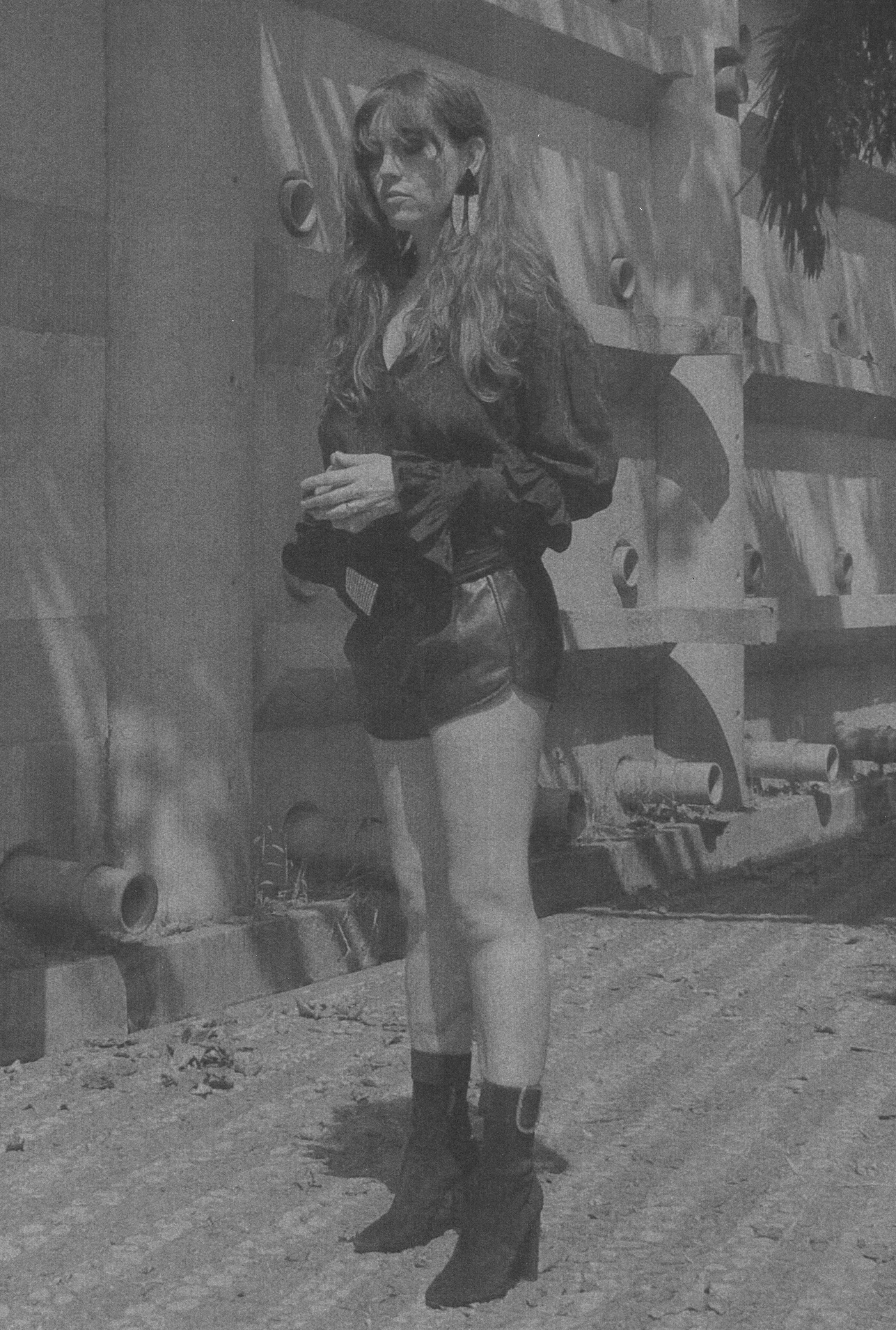
Saint Laurent by Anthony Vaccarello – Black silk lavallière blouse, leather minishort, suede and silk black belt, Joplin ankle boots in black suede, earrings
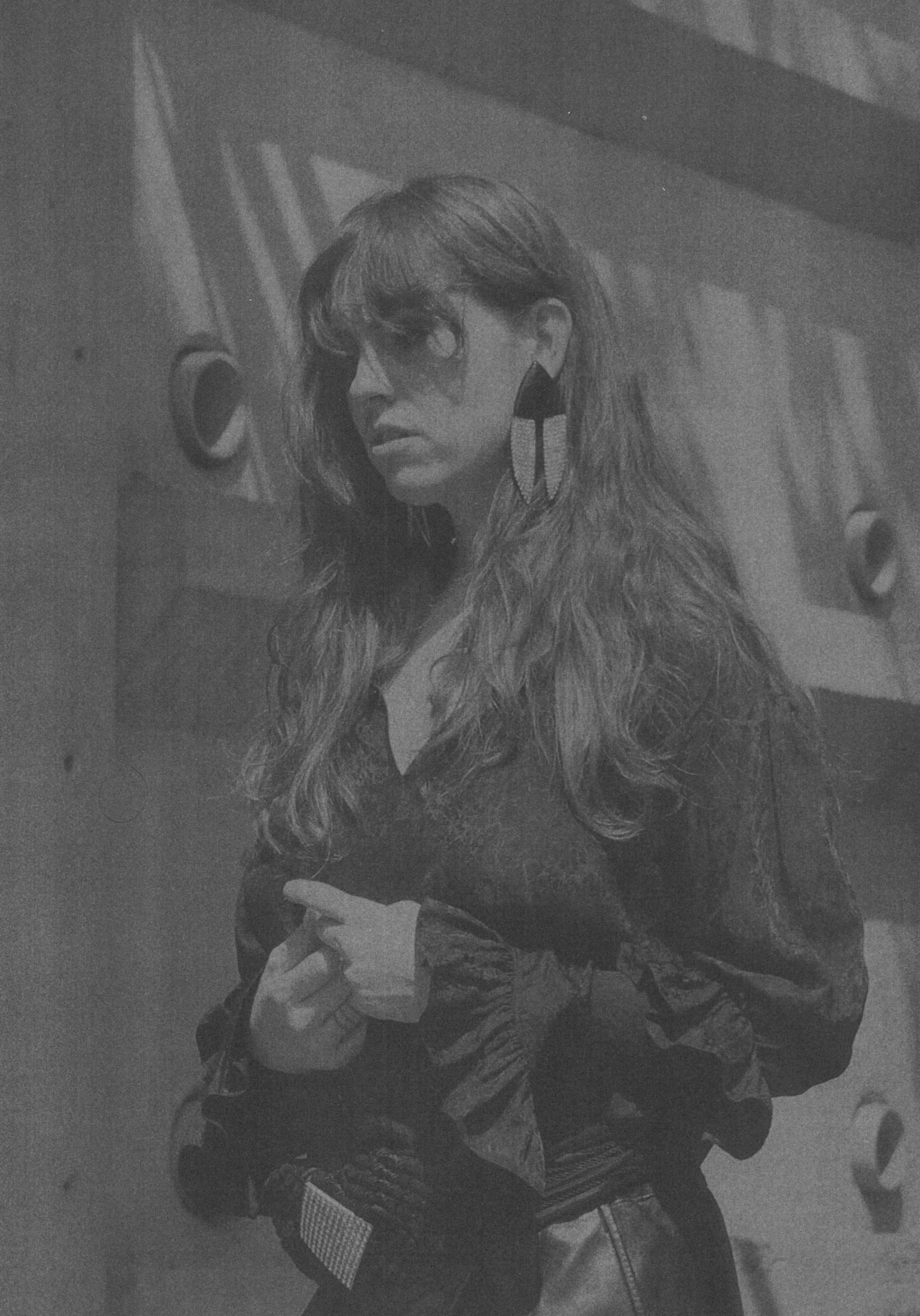
Saint Laurent by Anthony Vaccarello – black silk lavalliere blouse, leather minishort, suede and silk black belt
***
Photographer and stylist: Guillaume Barrau






